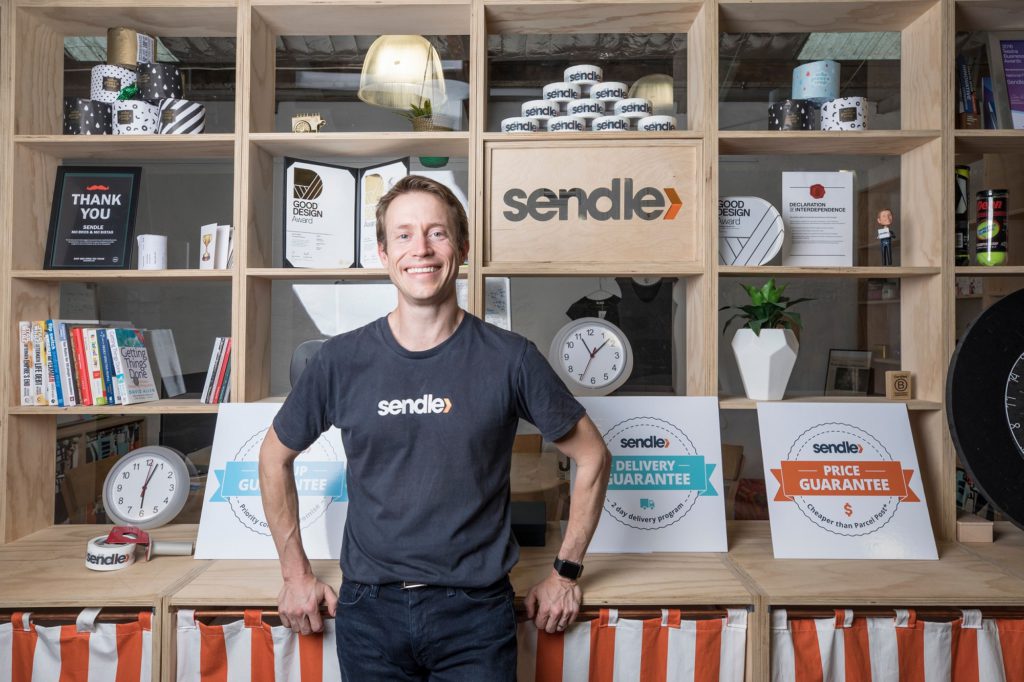Offer free and sustainable shipping, and be transparent about delivery times is the advice to retailers ahead of Christmas from James Chin Moody, CEO of Australian courier service for small business, Sendle.
“Free shipping can drive conversion and total spend, even if you need to set a minimum cart size, while carbon neutral shipping demonstrates a commitment to reducing your environmental footprint,” he told Retailbiz.
“Publishing delivery times on the checkout can build confidence around purchasing and becomes even more important the closer we get to Christmas.”
When it comes to ensuring parcels are delivered on time during the peak – Moody’s message is clear: Get organised now.
“We predict our parcel volumes to be 2.5x higher than last Christmas so retailers need to make sure they have enough team members in reserve to help pack parcels,” he said.
“With disruptions to supply chains and shoppers spending more time inside, people are planning purchases earlier than usual, so messaging about ‘special deals’ should be out there early. Retailers also need to find a strong way to tell customers when they need to ship their Christmas gifts by, so they get the message loud and clear. Send an email or publicise cut off dates on your website and social channels.
“This year it’s all about resilience, both in your own supply chain and your delivery network. Make sure you have backup options such as extra stock and manpower available if possible. Delivery drivers will be extra busy meeting the increased demand while having to operate safely in this COVID environment so be patient and kind to them.”

Moody said the once invisible shipping industry became the backbone of retail when Covid-19 hit with Sendle experiencing Christmas volumes since the pandemic began and small businesses shipping record numbers of parcels.
“In August, we did more parcel deliveries to Melbourne than in the first three months of the year combined.”
In relation to spending trends, consumers are more willing to shop locally with a recent Sendle survey revealing that more than half (55 percent) of small businesses that use Sendle are selling locally made products. And it’s all about convenience with strong customer service, reliable deliveries, and well-priced products becoming highly valued.
“At Sendle we believe parcel delivery needs to be thought of as part of the entire customer journey. The best merchants are now deeply aware of how shipping integrates with picking and packing, which can speed up delivery times by a whole day. Pleasing customers with early delivery is always a win and a demonstration that you’re exceeding expectations.
“Online shopping is here to stay, so every carrier needs to consider how they can stay relevant even after the parcel has been delivered to its final destination.”
Rhys Furner, head of partnerships at global commerce company and Sendle business partner, Shopify also shared his advice for retailers this festive season and his top tip is to get creative.
“During Covid-19, Shopify merchants connected with customers through online consultations, social commerce, AMAs, and virtual events. Small business owners and customer service teams alike have relied more heavily on video communication to connect with each other, which provides a prime opportunity as an unexpected extra to delight customers,” he told Retailbiz.

“Being able to offer flexible shipping options including ‘ship to multiple addresses’ will be key this holiday period due to higher than expected online Christmas shopping.”
Another key piece of advice from Furner is to carefully choose a delivery method, carrier, and shipping services as important aspects of the logistics process.
“It’s about finding the right balance between what your customers want and what you can realistically provide from an operational and a budget standpoint,” he said.
Shopify Shipping, which works with Sendle in Australia, makes it easier and faster to fulfill orders, by providing merchants with access to features like overnight delivery, package pick-ups, shipping insurance, tracking information, international shipping, and more depending on location, carrier, and mail class.
Furner said the accelerated shift to digital commerce triggered by Covid-19 is continuing, as more consumers shop online, and entrepreneurs step up to meet demand.
“We believe these changes in the landscape will endure as consumers’ new shopping behaviors stick and become the new normal. As a result, Shopify’s GMV performance in Q3 2020 increased 109% over the same quarter last year.”
The shift to online shopping doesn’t necessarily mean we are an ‘online-only’ era though.
“What it does emphasise is the importance of adopting an omnichannel model. People are buying whenever and however they want, whether in-store, on social media or ecommerce marketplaces. At the same time, there is intensifying competition for customers as brands seek to stand out from the competition.
“This makes it more challenging and more critical for retailers to establish and maintain a positive, robust customer experience across all of these touchpoints and channels.”

